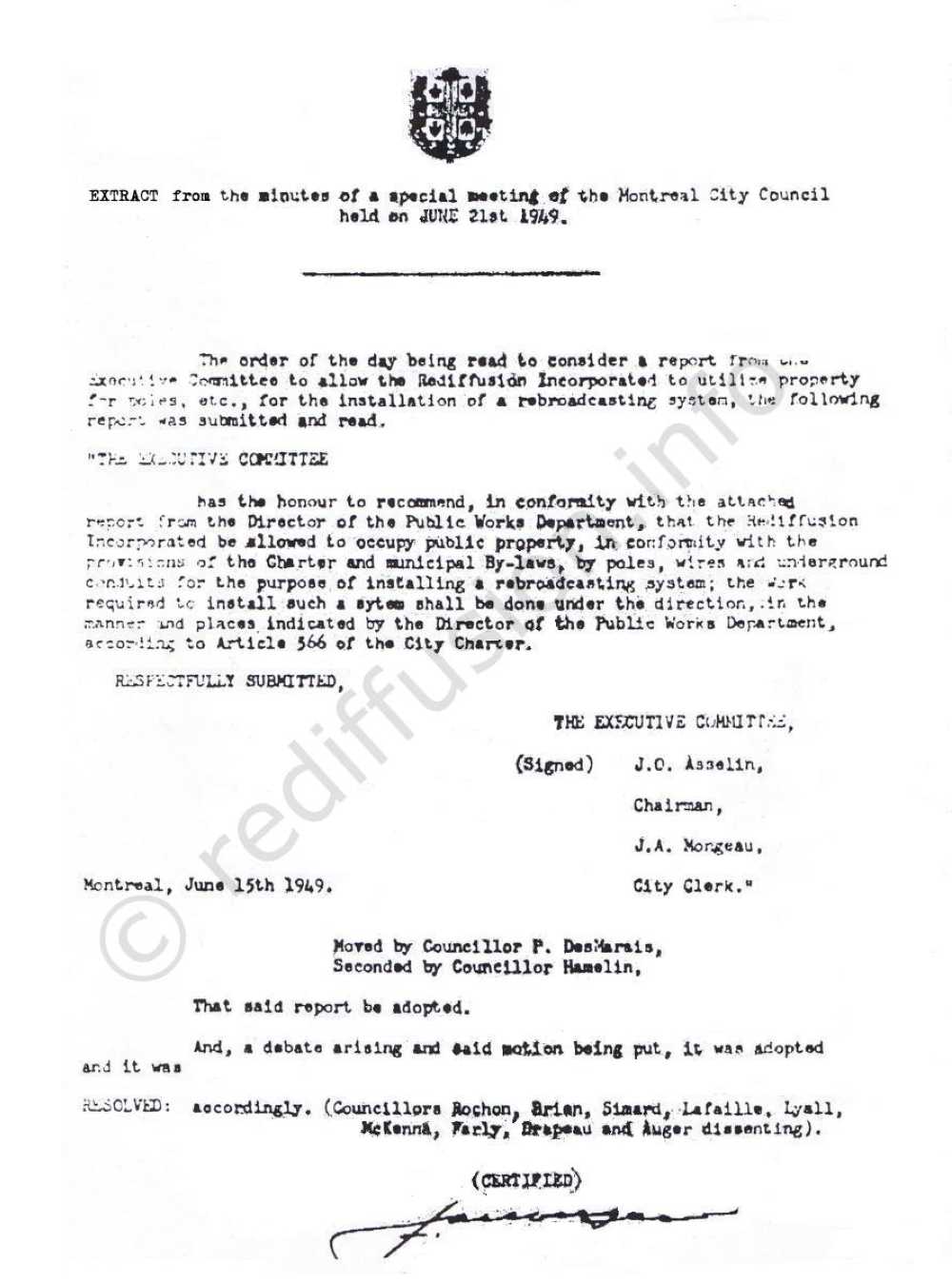 | Minutes, meeting Montreal City Council 1949. |
|
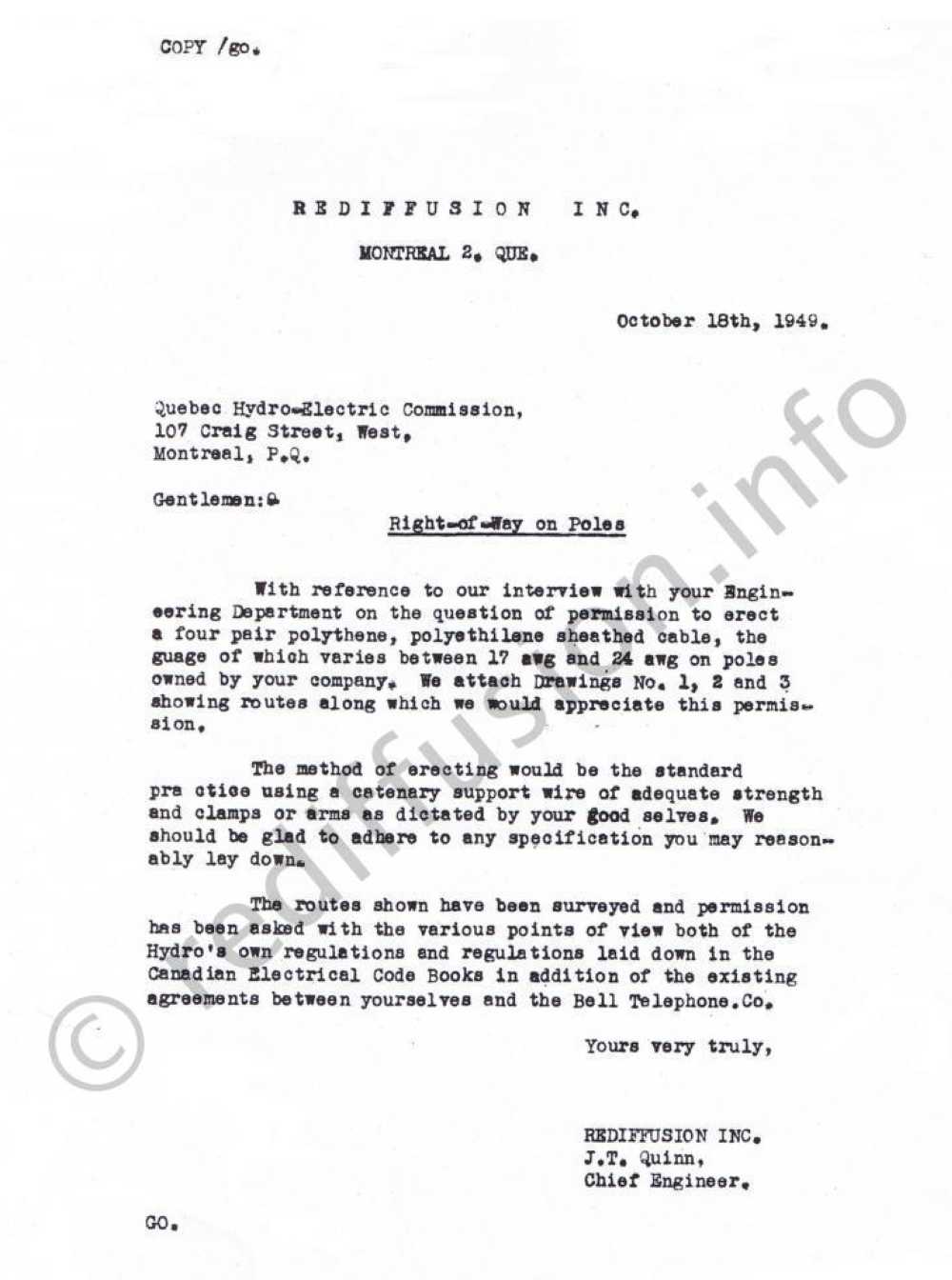 | Right of Way (Poles) 1949 |
|
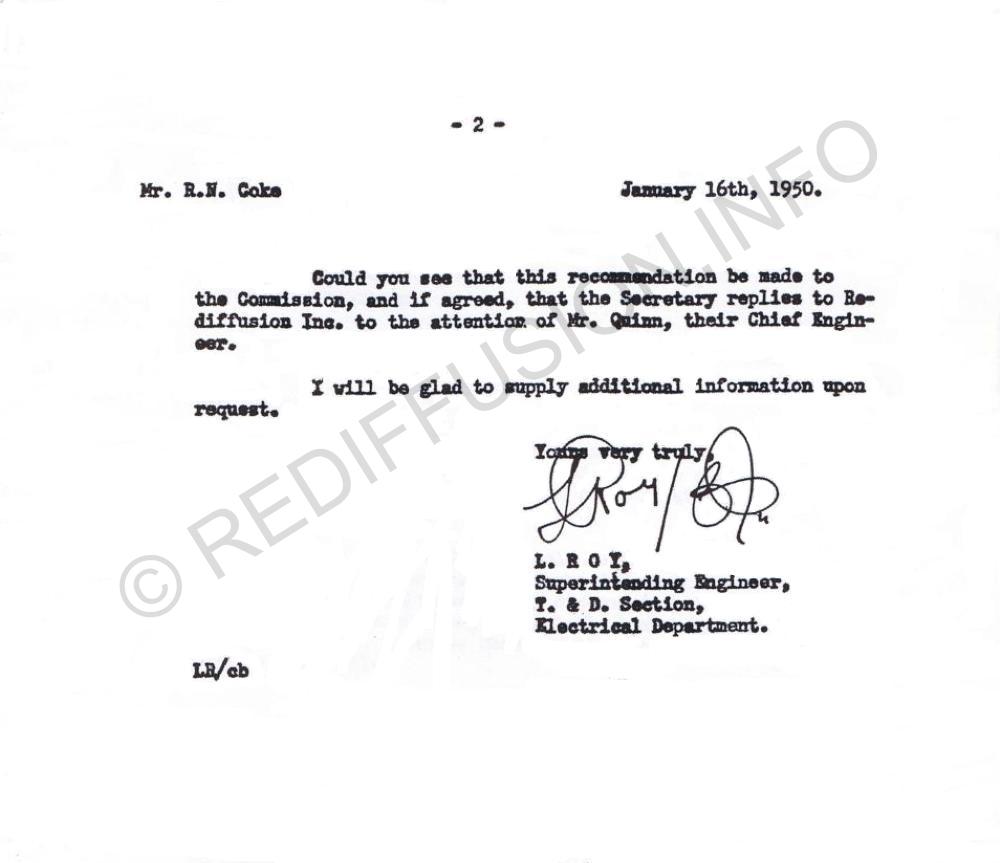 | Recommendation 1950 |
|
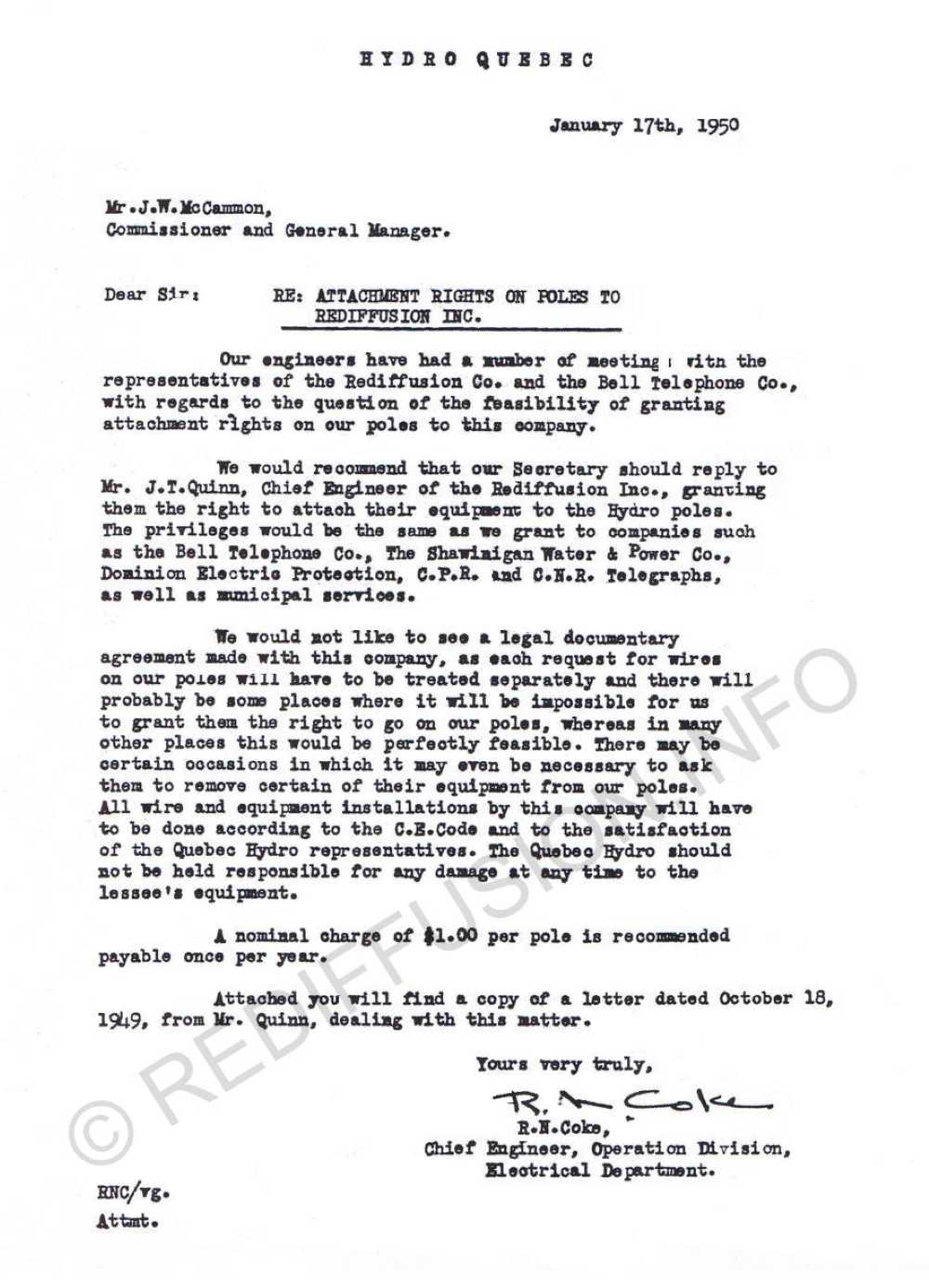 | Recommendation of Agreement 1950 |
|
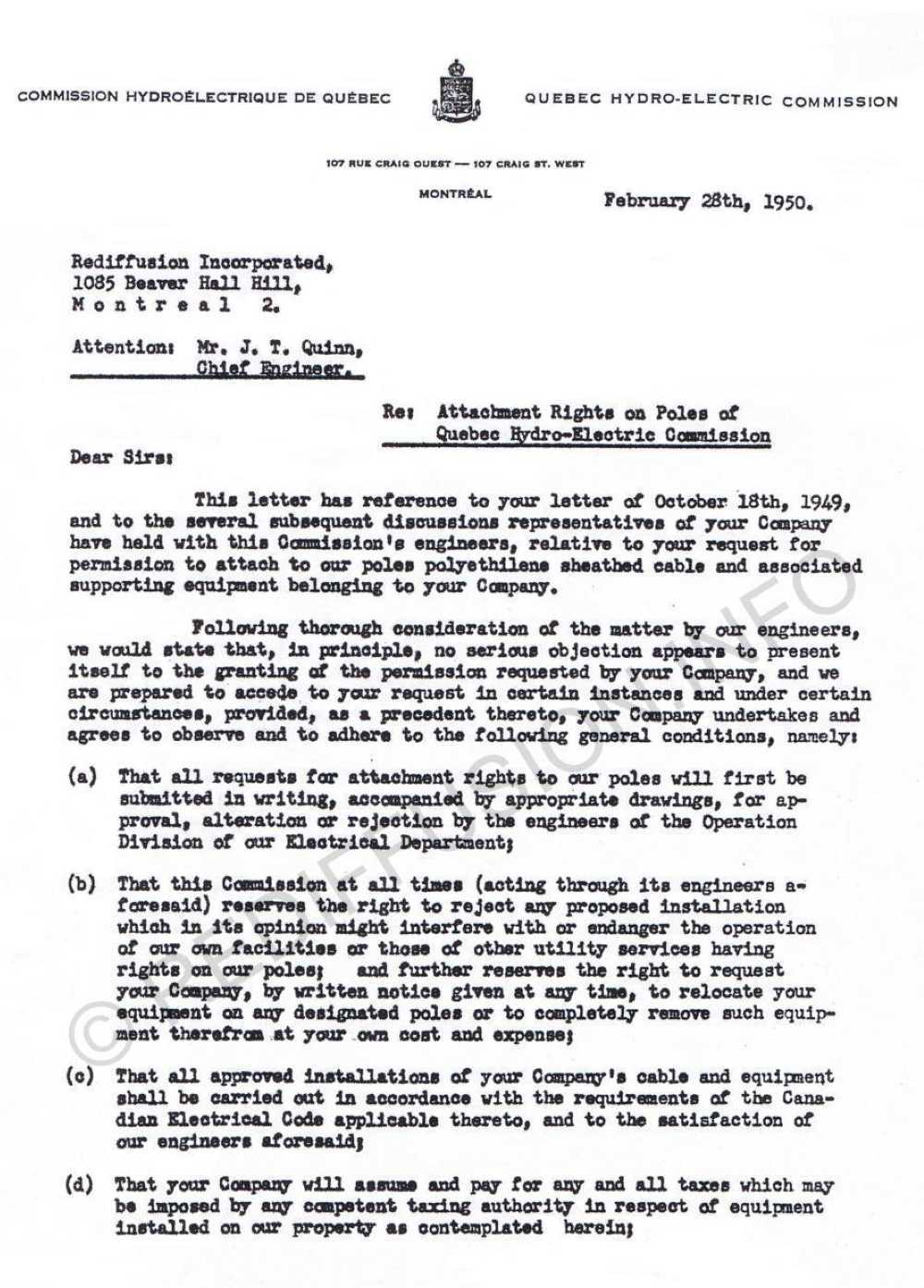 | Agreement in Principle, Feb1950 |
|
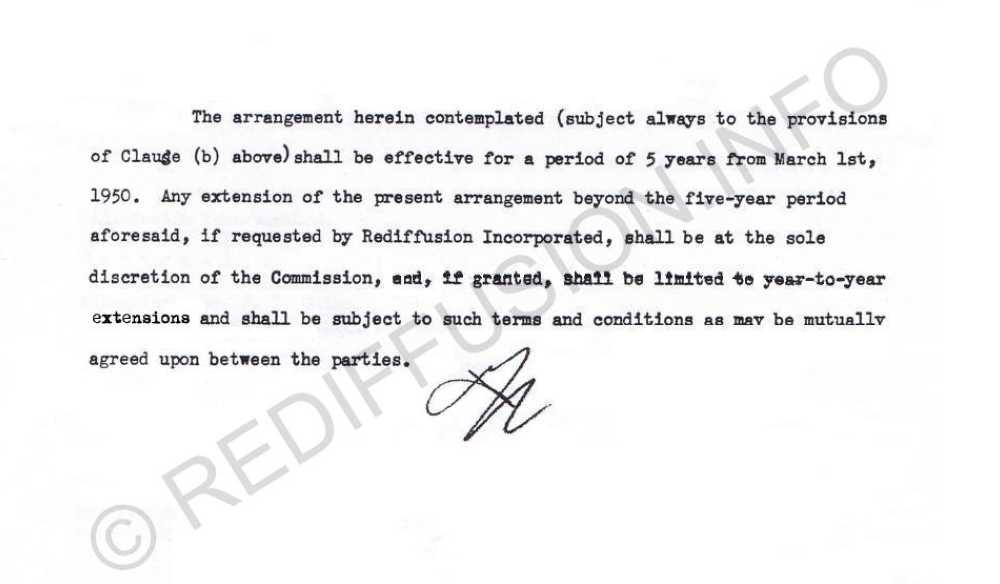 | Agreement in Principle (part b), Feb1950 |
|
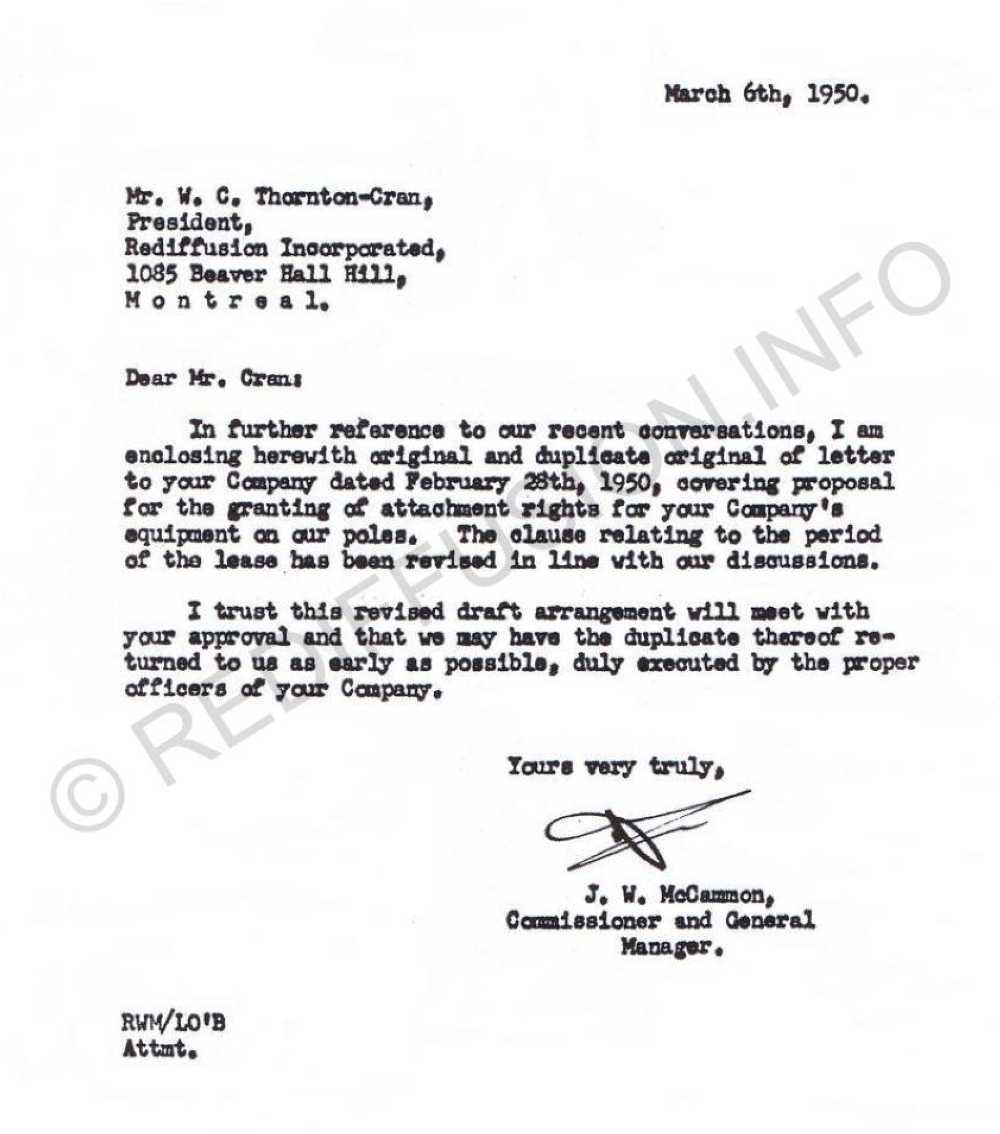 | Proposal of Rights 1950 |
|
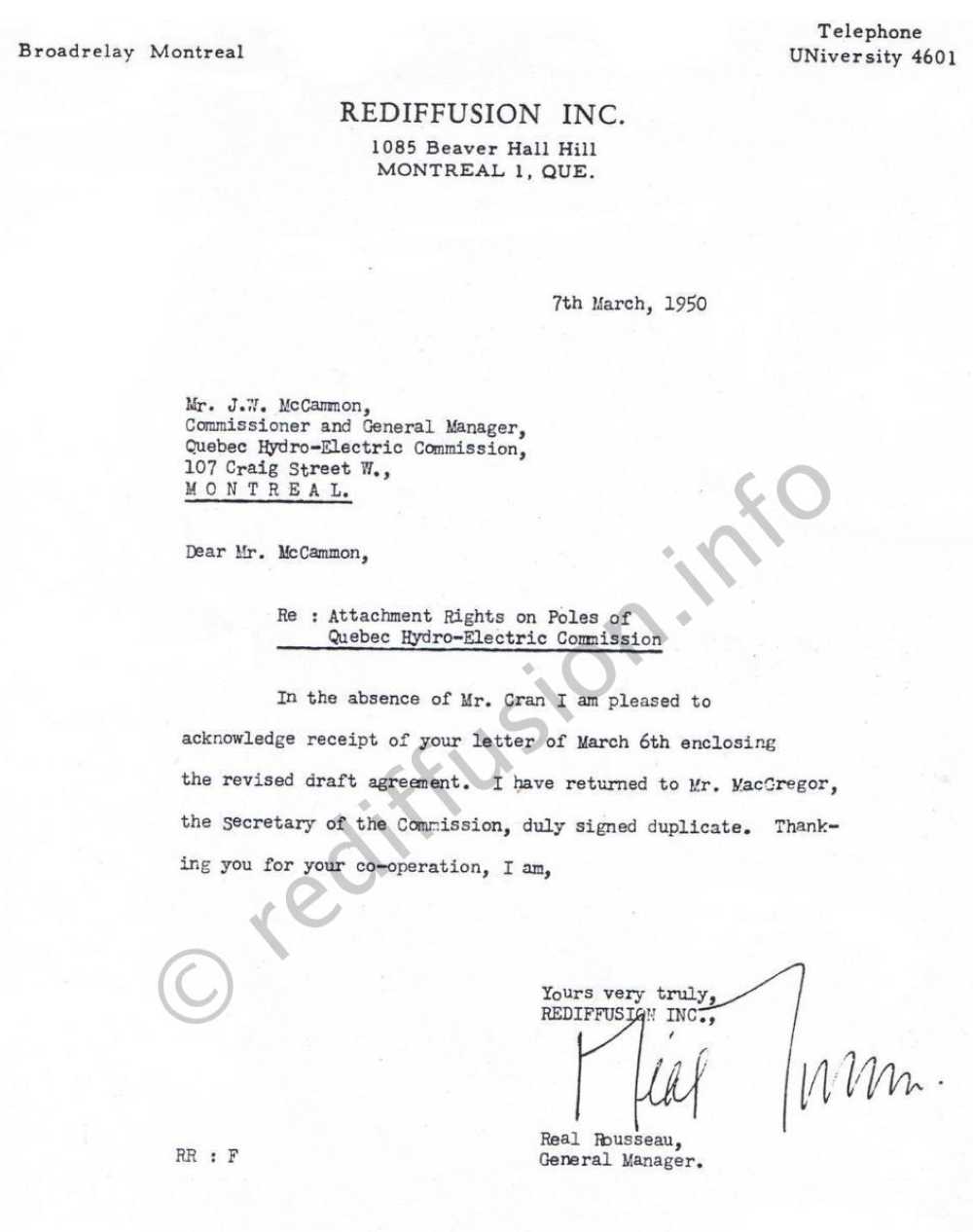 | Right of Way (Poles) 1950 |
|
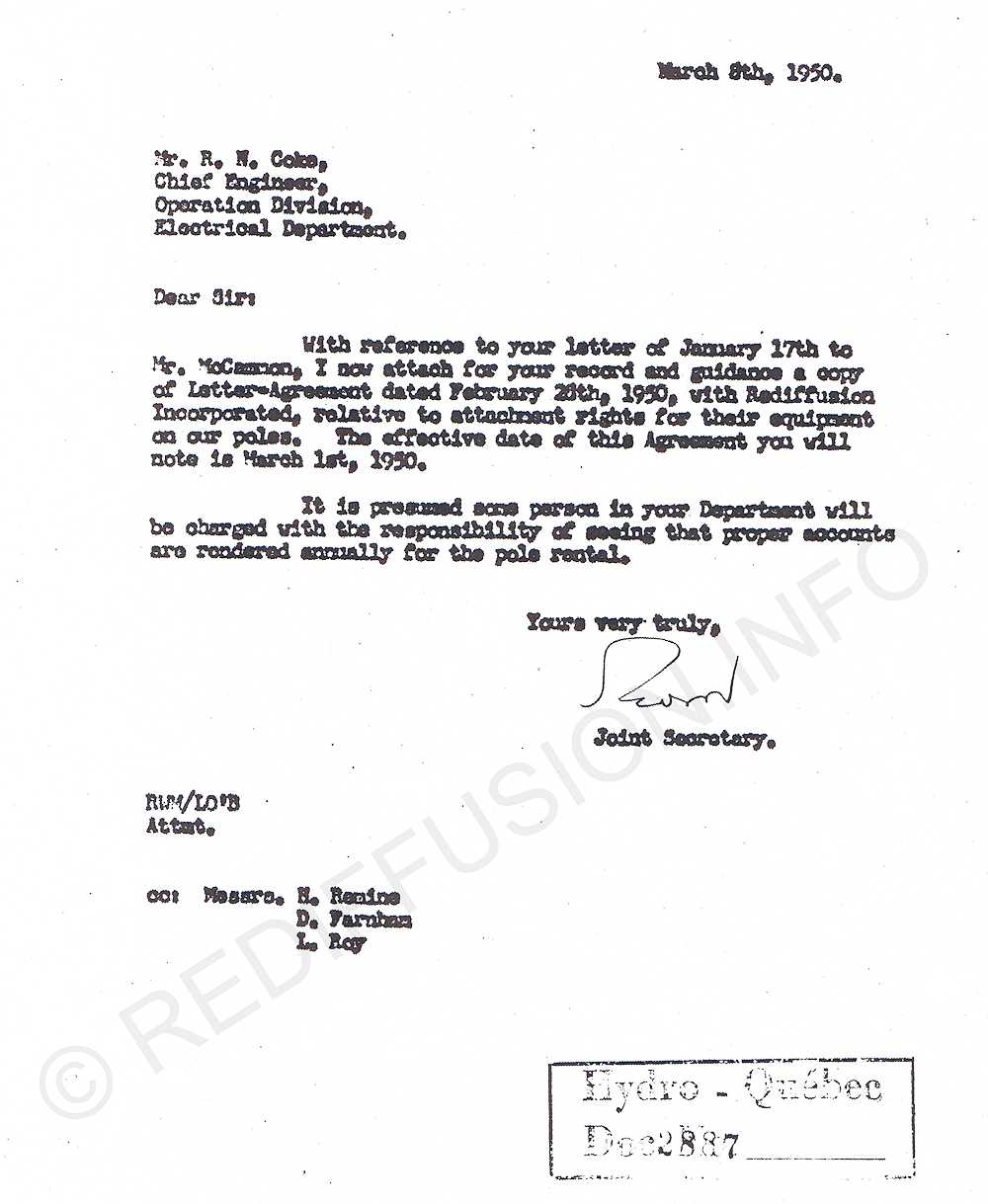 | Header 1950 |
|
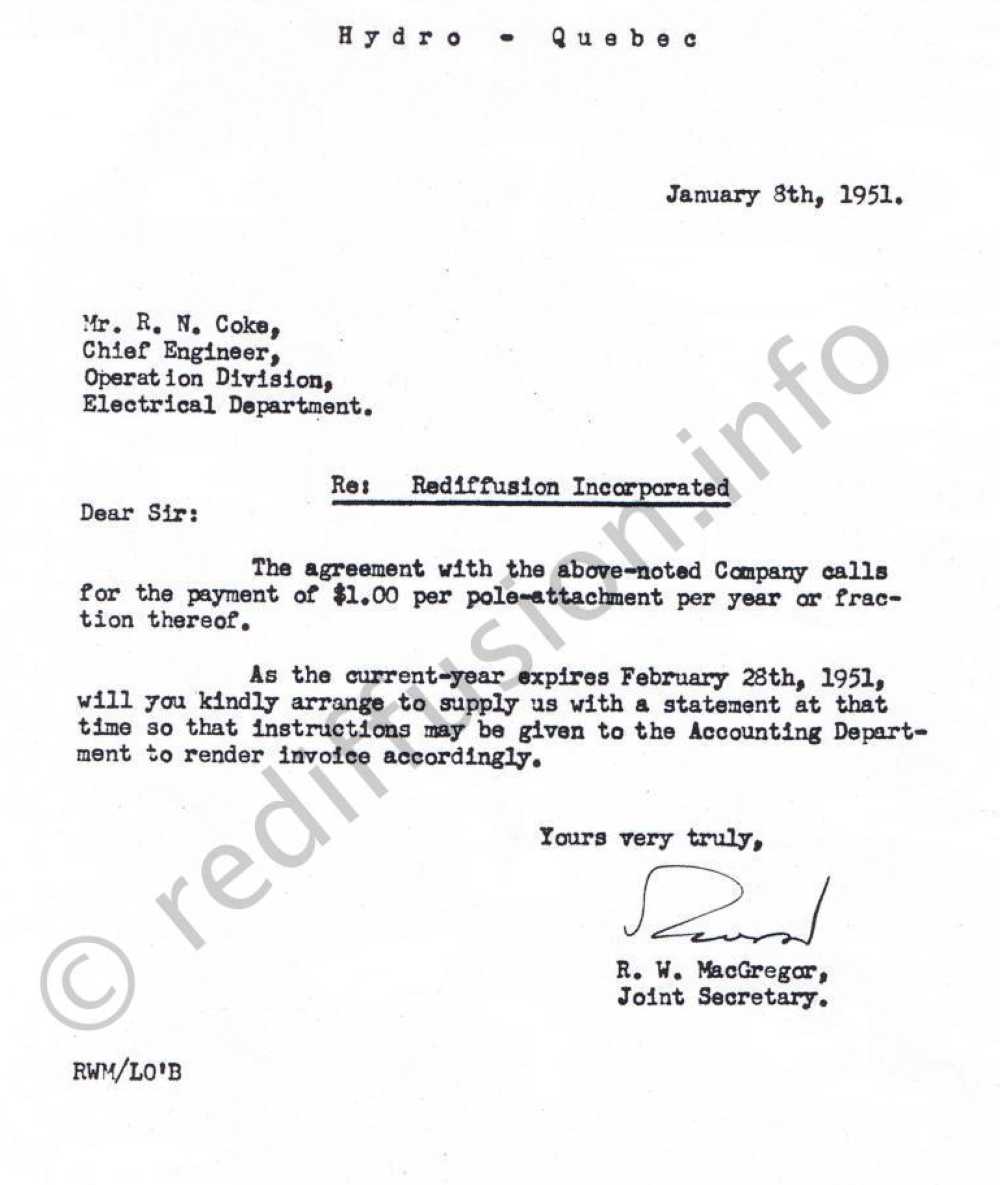 | Pole Rate 1951 |
|
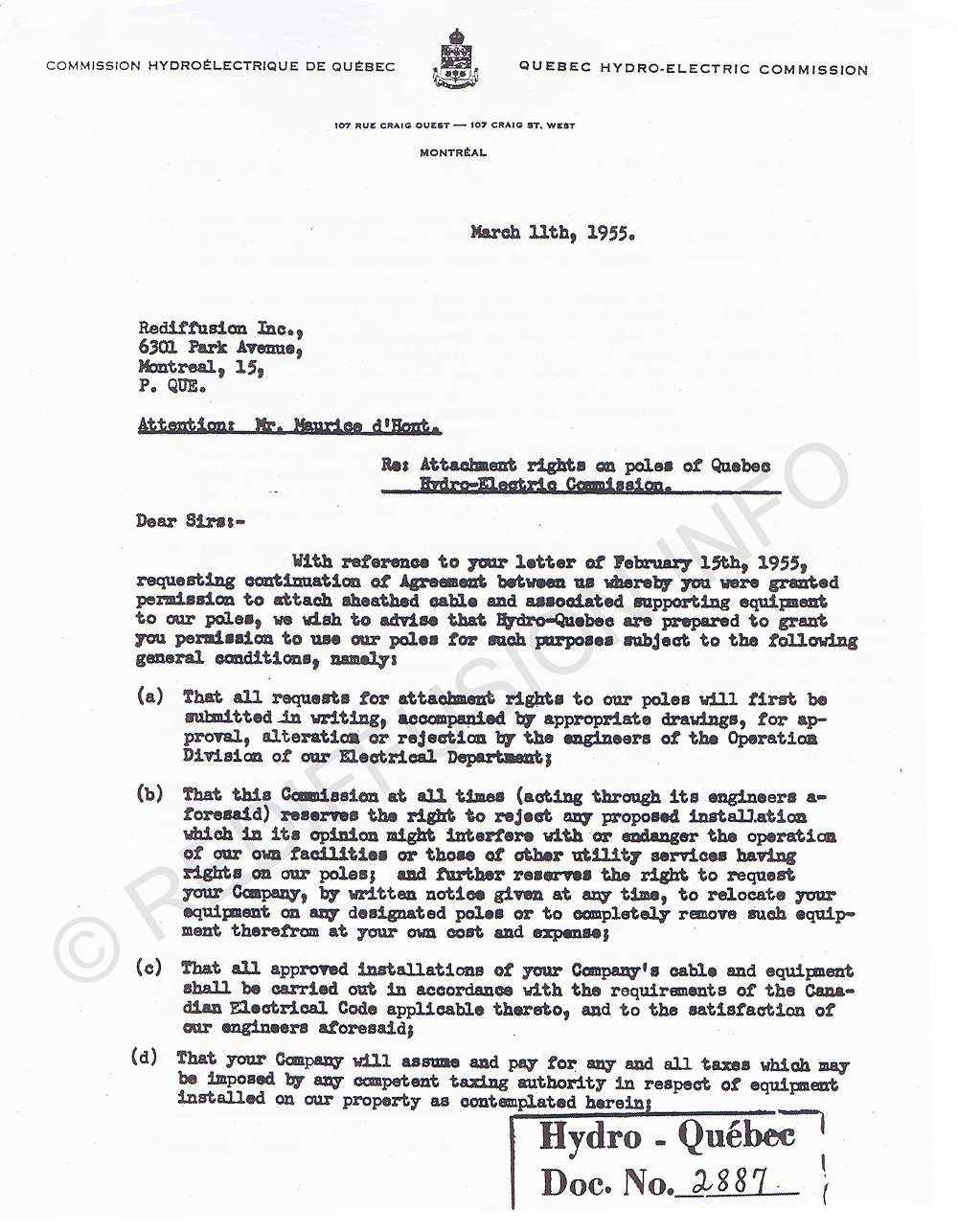 | Revised Agreement (part a), March1955 |
|
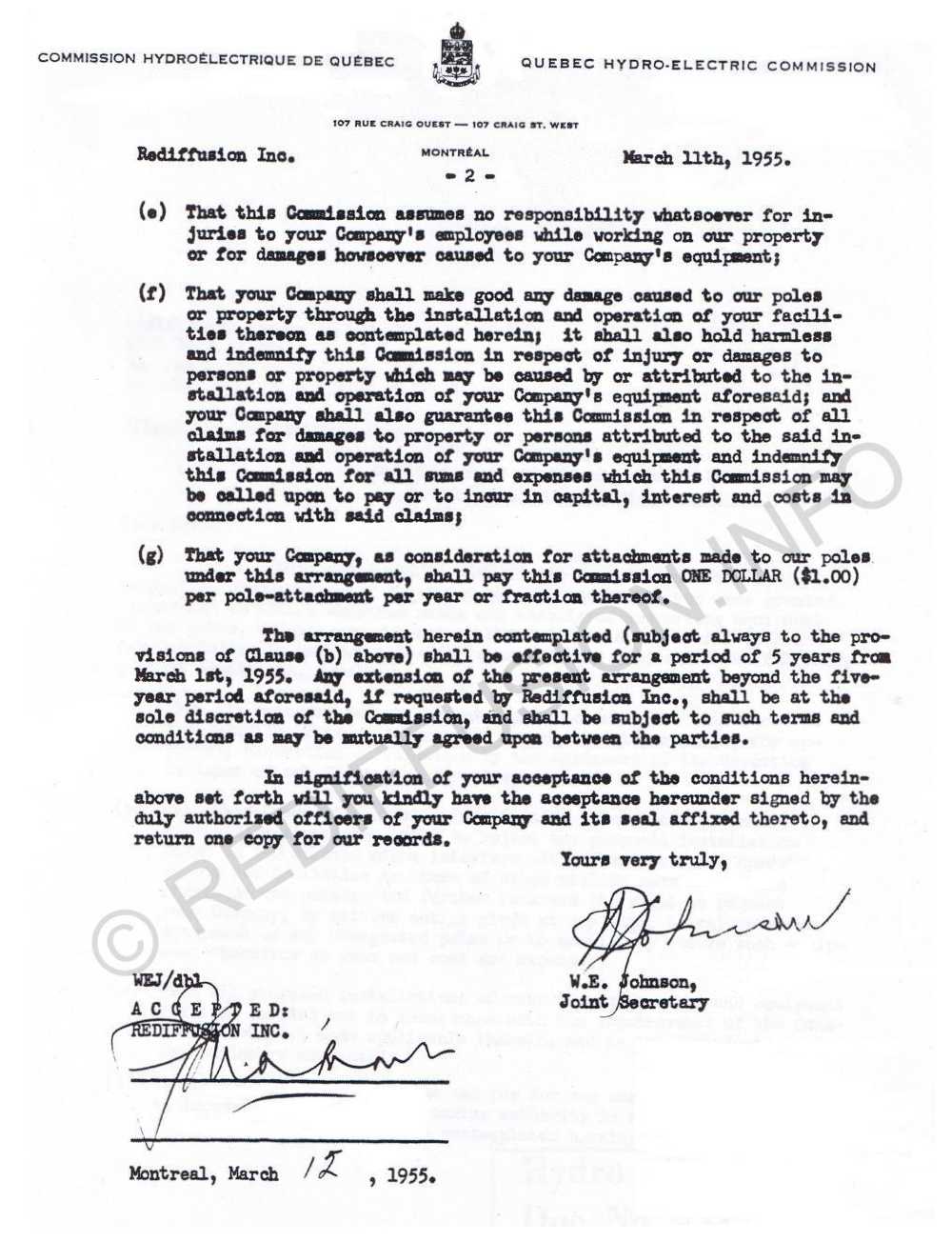 | Revised Agreement (part b), March1955 |
|
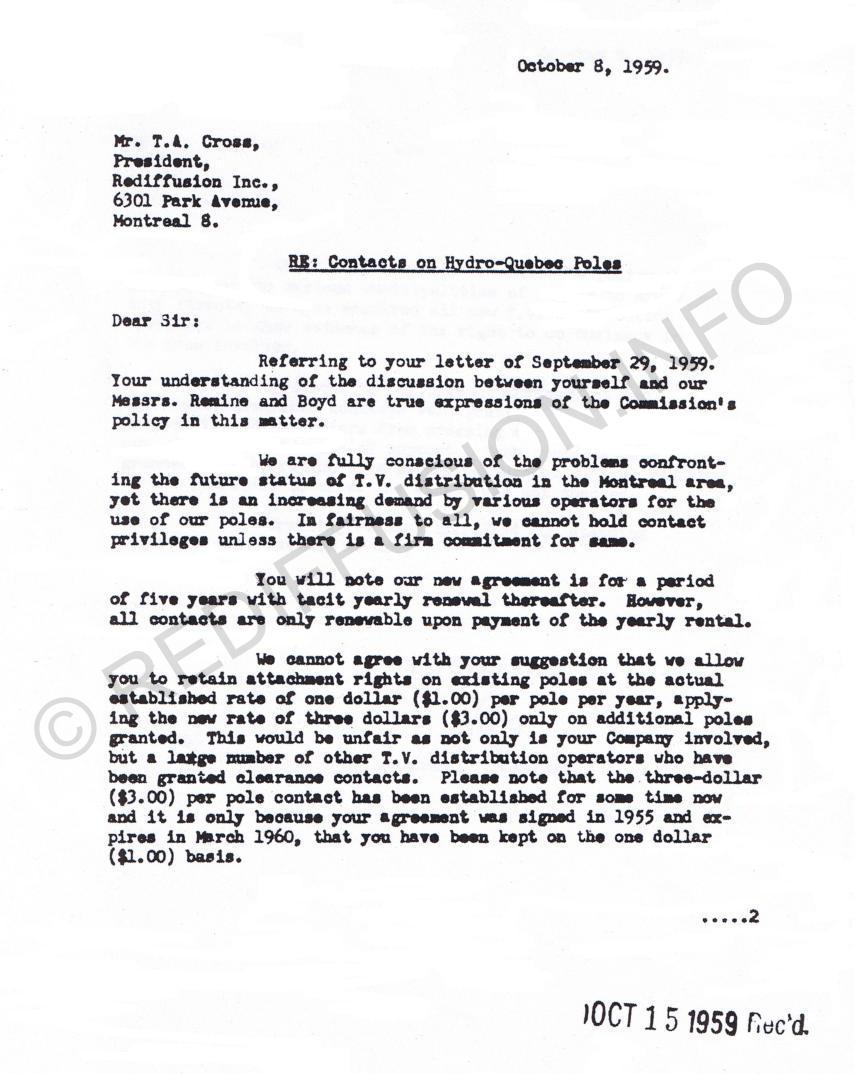 | Notification of Rate Increase 1959 |
|
An early 1960's picture of Rediffusion Wiremen attatching their distribution cables to the poles of Hydro-Quebec Montreal Canada.
REDIFFUSION INC.
1085 Beaver Hall Hill
MONTREAL 1, QUE.
History of Rediffusion Montreal Canada.
In 1949, Broadcast Relay Service began negotiations for the implementation of what was to be the first large scale cable TV system in North America.
The development of the system relied on reaching agreement with Quebec Hydro-Electric Commission to utilise their existing network of power poles supplying power to the Montreal Metro area.
Initial discussions began with a meeting with Montreal City Council on June 21 1949. After many months if negotiation agreement was reached between Hydro Quebec and Rediffusion Inc. on February 28 1950 for an initial 5 year period.
The Rediffusion cable system was operational in 1952 and eventually supplyed 80,000 homes in Montreal Quebec.
Tel: UNiversity 4601
Cable: Broadrelay Montreal


The original documentation within these pages remains the property of: Hydro Quebec 75 René-Lévesque Boulevard West, Montreal, Quebec H2Z 1A4, CANADA. and must not be copied or reproduced without permission.
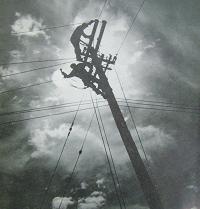
Did you work for Rediffusion Inc.
in Montreal or can you provide any information about the company which can be added to this page.
Were you one of the 80,000 subscribers ? What are your memories of Rediffusion ? Please let us know.


Rediffusion had chosen Montreal for it's North American venture into Cable Relay because the presence of high density tenament housing made it practical to wire the city at an efficient cost per. subscriber. It had learned that CBC ( Canadian Broadcast Corp. ) were planning to start a television service in Canada and had chosen Montreal as the city for their first station.
What was required was a system specifically for Montreal unlike the HF system which had been developed to carry the television channels in the UK. It was felt that the high use of HF broadcast frequencies in North America would cause an unacceptable level of program interference to balanced pair cables. It was decided to develop a coaxial relay system , but the only coaxial cable available at that time was braided copper, and braided copper wasn't good enough for this purpose. Rediffusion worked with cable manufacturers to develop a special cable using a solid aluminum sheath. This cable was to become the industry standard in use right across North America for cable TV.
The Montreal system was designed initially as a two-channel system to serve a fairly large area. The service commenced on 6th September 1952, which was the date the CBC opened CBFT, the first transmitter in Montreal, and the cable system was ready to carry the transmissions on that day. The cable system had been operating before that for a period of six to nine months, but there were no broadcast signals to carry, not even from the States. There were no American transmitters at that time within receivable distance in Montreal. What Rediffusion did was to build a studio equipped with a film chain slide projector facilities and for about five or six hours a day, over a period of about nine months, they distributed programs to the subscribers consisting of film almost entirely in French - movies, news reports, and talking head programs. So, Montreal Rediffusion was not only the first cable system to be operating in Canada, it was also the first cable system in North America to originate its own programs.
The CBC opened a second transmitter in Montreal, CBMT, the following year and Rediffusion was required to carry it. It was designed as a two-channel system. So up until the time CBFT went on the air, Rediffusion was carrying these locally produced programs and they were very popular. Many subscribers were connected just to get these programs. Television was something new in those days and it didn't matter where it came from. Whatever the origins people would watch it. Rediffusion had to take off their locally produced programs and they had CBFT on one channel and CBMT on the other, two channels. That was not appreciated by the subscribers because by that time they had become accustomed to a variety of television, having seen programs which were being re-broadcast from American sources and they had become aware of what was available just over the border and they started wanting more. Some of these American stations could be received 'off air' in Montreal with a good antenna and in an effort to satisfy the subscriber, Rediffusion made modifications to allow their Cable System to carry additional channels for the distribution of these programs at that time.
The following thumbnails are copies of the original negotiation documents and contractural agreements between Hydro-Quebec.and Rediffusion Inc.
Click on the thumbnails for a full screen view
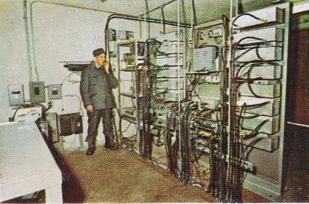
1969 CATV Equipment Room. Montreal Canada.
Brian Coyne, Asst. Chief Engineer Overseas Division had responsibilities for overseeing the implementation of the Rediffusion wired system in Montreal.
Read about his memories: Brian Coyne








